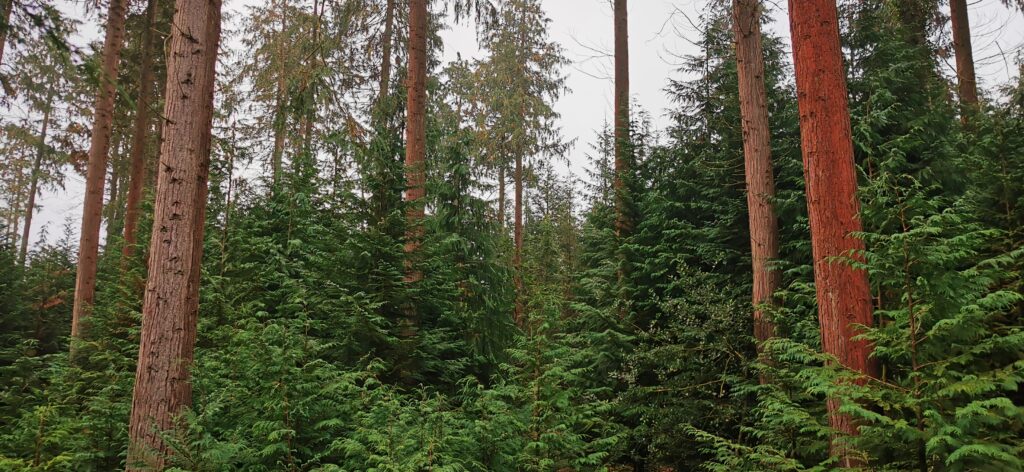
16 Mar Continuous Cover Forestry In Ireland
Continuous Cover Forestry (CCF) In Ireland
An Ecological and Economic Alternative to Clearfelling
What is Continuous Cover Forestry (CCF)?
Continuous Cover Forestry (CCF), is a forest management approach that avoids clearfelling. Instead of removing all trees at once, it uses selective harvesting and natural regeneration to maintain permanent forest cover. Trees are removed gradually, allowing the forest to renew itself in stages — keeping it productive, biodiverse, and visually appealing. In fact, CCF is an increasingly recognized method that aligns with sustainable forest management practices.
A Better Way to Harvest Forests
CCF is becoming increasingly popular in Ireland, and for good reason. For landowners and farmers who don’t like the idea of clearfelling their land, the selective felling offers an alternative that’s both environmentally responsible and financially rewarding. Many landowners are finding that a multi-layered structure enhances the ecological resilience of their woodlands.
At Ecoplan Forestry, we’ve been promoting and delivering CCF solutions since 2007 — not because it’s fashionable, but because we believe it’s the right approach on the right sites. It allows forest owners to maintain steady income over time, keep their land attractive and healthy, and create long-term value for their family or farm.
Why Choose CCF?
- 🌲 No Clearfelling: The forest never disappears from the landscape.
- 🌿 Ecological Benefits: Encourages biodiversity, native regeneration, and better soil and water retention.
- 💶 Regular Income: Instead of one large payment every 30 years, CCF provides periodic income from selective harvesting.
- 🧱 Long-Term Value: Keeps your woodland intact and productive for generations.
Is CCF Right for Your Forest?
Not every site is suitable for CCF — it depends on forest type, structure, age, species, and access. But many Irish woodlands (even conifer plantations) have strong potential to transition gradually into a CCF model. The key is careful planning and expert thinning — not just leaving it alone.
Adopting close-to-nature Forestry practices may require adjustments in management but can lead to healthier forests.
We’ll assess your woodland and provide honest advice on:
- Whether CCF is viable on your site
- What changes would be needed
- How to plan a harvesting cycle
- How to maximise both income and ecological gains
How Ecoplan Forestry Can Help
Our Forest Management Consultancy service includes tailored support for landowners interested in CCF. We help you:
- Develop a CCF strategy suited to your goals
- Apply for relevant grants or regulatory approvals
- Engage contractors who understand how to thin sensitively
- Track harvesting through our Ecoplan Docket System and shared WhatsApp group, so you know exactly what’s happening and when.
Protecting Your Long-Term Interest
We don’t work for mills or harvesting companies. We work for you. That means no unnecessary felling, no short-term profits at your expense, and no surprises.
Our harvest agreements are clear, and our focus is on managing your forest — not exploiting it.
Considering Your Options?
You don’t have to go it alone — and you don’t have to clearfell. If you’re curious about this alternative forest management , just get in touch, we’d be happy to take a look at your woodland and help you decide what’s best.
If you’re curious about how CCF can be implemented in your area, we’re here to help.
Frequently Asked Questions
Is Continuous Cover Forestry more expensive?
It can involve more planning and monitoring, but it often avoids large replanting costs and offers steadier income.
Can I switch to CCF later in the rotation?
Yes, even mid-rotation crops can often be adapted, though it depends on age, species, and site conditions. Contact us to discuss.
More to Explore
Interested in managing your forest differently? You might also want to explore some of our related services:
🌳 Forest Harvesting & Thinning Services – Learn how we handle harvesting transparently and on your terms.
🌿 Forest & Woodland Management Consultancy – Expert consultancy can help you plan, improve, and protect your forest from start to finish.
Every forest is different — and we’re here to help you find the right solution for yours.
You can read the UK Forestry Commisions Booklet on managing CCF Here


